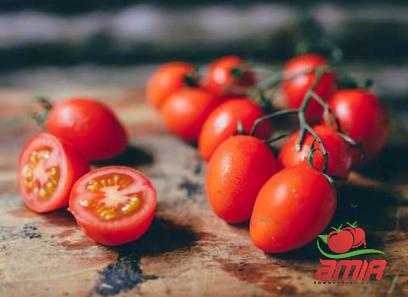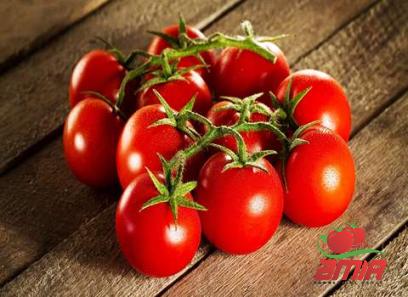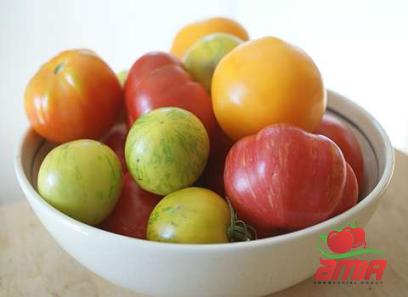Do you find yourself reaching for store-bought tomato paste every time you cook? What if I told you that creating your own homemade tomato paste is not only easy but also yields a superior taste and freshness that will elevate your dishes to a whole new level? In this comprehensive guide, we will delve into the world of homemade tomato paste, exploring the simple steps and techniques to create this kitchen staple right in the comfort of your own home.

.
 **Why Make Homemade Tomato Paste?** Before we dive into the process of making homemade tomato paste, let’s first understand why it’s worth the effort. While store-bought tomato paste can be convenient, it often contains added preservatives, sugar, and salt. Making your own tomato paste allows you to control the quality of ingredients, resulting in a healthier and more flavorful end product. Additionally, homemade tomato paste can be customized to suit your taste preferences, whether you prefer a smoother or chunkier texture. **Choosing the Right Tomatoes** The key to a delicious homemade tomato paste lies in selecting the right tomatoes. Look for ripe, flavorful tomatoes such as Roma tomatoes, San Marzano tomatoes, or any meaty variety with low water content. These tomatoes are ideal for making tomato paste as they have a rich, concentrated flavor that will enhance the final product. **Preparing the Tomatoes** Start by washing the tomatoes thoroughly to remove any dirt or debris. Next, core the tomatoes and cut them into quarters. If you prefer to remove the seeds, you can do so by gently squeezing the quarters over a bowl to catch the seeds. However, the seeds contain a lot of flavor and nutrients, so you may choose to keep them for a more robust tomato paste. **Cooking the Tomatoes** In a large pot, combine the quartered tomatoes and a splash of water to prevent sticking. Bring the mixture to a simmer over medium heat, then reduce the heat to low and let it simmer gently for about 30-45 minutes. Stir occasionally to prevent the tomatoes from scorching. As the tomatoes cook down, they will release their juices and start to thicken. You can add aromatics such as garlic, onions, and herbs to enhance the flavor of the tomato paste. Feel free to experiment with different seasonings to create a unique blend that suits your taste preferences. **Straining and Pureeing** Once the tomatoes have cooked down and thickened, remove the pot from the heat and allow it to cool slightly. Using a food mill or a fine-mesh sieve, strain the cooked tomatoes to remove any skins, seeds, and large chunks.
**Why Make Homemade Tomato Paste?** Before we dive into the process of making homemade tomato paste, let’s first understand why it’s worth the effort. While store-bought tomato paste can be convenient, it often contains added preservatives, sugar, and salt. Making your own tomato paste allows you to control the quality of ingredients, resulting in a healthier and more flavorful end product. Additionally, homemade tomato paste can be customized to suit your taste preferences, whether you prefer a smoother or chunkier texture. **Choosing the Right Tomatoes** The key to a delicious homemade tomato paste lies in selecting the right tomatoes. Look for ripe, flavorful tomatoes such as Roma tomatoes, San Marzano tomatoes, or any meaty variety with low water content. These tomatoes are ideal for making tomato paste as they have a rich, concentrated flavor that will enhance the final product. **Preparing the Tomatoes** Start by washing the tomatoes thoroughly to remove any dirt or debris. Next, core the tomatoes and cut them into quarters. If you prefer to remove the seeds, you can do so by gently squeezing the quarters over a bowl to catch the seeds. However, the seeds contain a lot of flavor and nutrients, so you may choose to keep them for a more robust tomato paste. **Cooking the Tomatoes** In a large pot, combine the quartered tomatoes and a splash of water to prevent sticking. Bring the mixture to a simmer over medium heat, then reduce the heat to low and let it simmer gently for about 30-45 minutes. Stir occasionally to prevent the tomatoes from scorching. As the tomatoes cook down, they will release their juices and start to thicken. You can add aromatics such as garlic, onions, and herbs to enhance the flavor of the tomato paste. Feel free to experiment with different seasonings to create a unique blend that suits your taste preferences. **Straining and Pureeing** Once the tomatoes have cooked down and thickened, remove the pot from the heat and allow it to cool slightly. Using a food mill or a fine-mesh sieve, strain the cooked tomatoes to remove any skins, seeds, and large chunks.
..
 This step will give your tomato paste a smooth and velvety texture. After straining, transfer the tomato mixture to a blender or food processor and puree until smooth. You can also pass the pureed mixture through a fine-mesh sieve for an even smoother consistency. The goal is to achieve a thick and creamy tomato paste that is free of any lumps or chunks. **Cooking Down the Tomato Paste** Return the pureed tomato mixture to the pot and continue to cook it over low heat. Stir frequently to prevent the tomato paste from sticking to the bottom of the pot and burning. As the tomato paste cooks, it will continue to thicken and reduce in volume, intensifying the flavor with each passing minute. Depending on the desired consistency, you can cook the tomato paste for an additional 1-2 hours until it reaches a deep, brick-red color and a thick, spreadable texture. The longer you cook the tomato paste, the more concentrated and flavorful it will become. **Storing and Preserving** Once the homemade tomato paste has reached the desired consistency, allow it to cool completely before transferring it to airtight containers or jars. Store the tomato paste in the refrigerator for up to 1-2 weeks or freeze it for long-term storage. To freeze the tomato paste, portion it into ice cube trays or small containers for easy thawing and use in future recipes. **Using Homemade Tomato Paste** Homemade tomato paste can be used in a variety of dishes to add depth of flavor and richness. Whether you’re making pasta sauce, soups, stews, or marinades, a dollop of homemade tomato paste will elevate the taste of your dishes to a new level. You can also spread it on pizzas, sandwiches, or grilled meats for a burst of tomato goodness. Experiment with different herbs and seasonings to customize the flavor of your homemade tomato paste. Add a pinch of sugar for sweetness, a dash of vinegar for acidity, or a sprinkle of smoked paprika for a smoky twist. The possibilities are endless, so don’t be afraid to get creative in the kitchen. In conclusion, making homemade tomato paste is a rewarding and satisfying culinary experience that will take your cooking to the next level. With just a few simple ingredients and a bit of time and patience, you can create a flavorful and versatile condiment that will enhance a wide range of dishes.
This step will give your tomato paste a smooth and velvety texture. After straining, transfer the tomato mixture to a blender or food processor and puree until smooth. You can also pass the pureed mixture through a fine-mesh sieve for an even smoother consistency. The goal is to achieve a thick and creamy tomato paste that is free of any lumps or chunks. **Cooking Down the Tomato Paste** Return the pureed tomato mixture to the pot and continue to cook it over low heat. Stir frequently to prevent the tomato paste from sticking to the bottom of the pot and burning. As the tomato paste cooks, it will continue to thicken and reduce in volume, intensifying the flavor with each passing minute. Depending on the desired consistency, you can cook the tomato paste for an additional 1-2 hours until it reaches a deep, brick-red color and a thick, spreadable texture. The longer you cook the tomato paste, the more concentrated and flavorful it will become. **Storing and Preserving** Once the homemade tomato paste has reached the desired consistency, allow it to cool completely before transferring it to airtight containers or jars. Store the tomato paste in the refrigerator for up to 1-2 weeks or freeze it for long-term storage. To freeze the tomato paste, portion it into ice cube trays or small containers for easy thawing and use in future recipes. **Using Homemade Tomato Paste** Homemade tomato paste can be used in a variety of dishes to add depth of flavor and richness. Whether you’re making pasta sauce, soups, stews, or marinades, a dollop of homemade tomato paste will elevate the taste of your dishes to a new level. You can also spread it on pizzas, sandwiches, or grilled meats for a burst of tomato goodness. Experiment with different herbs and seasonings to customize the flavor of your homemade tomato paste. Add a pinch of sugar for sweetness, a dash of vinegar for acidity, or a sprinkle of smoked paprika for a smoky twist. The possibilities are endless, so don’t be afraid to get creative in the kitchen. In conclusion, making homemade tomato paste is a rewarding and satisfying culinary experience that will take your cooking to the next level. With just a few simple ingredients and a bit of time and patience, you can create a flavorful and versatile condiment that will enhance a wide range of dishes.
…
 So why settle for store-bought tomato paste when you can easily make your own at home? Give it a try and taste the difference for yourself! **Tips for Making the Best Homemade Tomato Paste** 1. **Choose the Right Tomatoes**: Opt for ripe, flavorful tomatoes with low water content for the best results. Roma or San Marzano tomatoes are ideal choices, but feel free to experiment with different varieties to find your favorite. 2. **Enhance the Flavor**: Adding aromatics such as garlic, onions, and herbs can elevate the flavor of your tomato paste. Experiment with different seasonings to create a unique blend that suits your taste preferences. 3. **Strain for a Smooth Texture**: Straining the cooked tomatoes will remove any skins, seeds, and large chunks, giving your tomato paste a smooth and velvety texture. For an even smoother consistency, pass the pureed mixture through a fine-mesh sieve. 4. **Cook Slow and Low**: Cooking the tomato paste over low heat allows the flavors to deepen and intensify. Stir frequently to prevent burning and ensure even cooking. The longer you cook the tomato paste, the richer and more concentrated the flavor will be. 5. **Store Properly**: To preserve the freshness and flavor of your homemade tomato paste, store it in airtight containers or jars in the refrigerator for short-term use. For longer storage, portion the tomato paste into freezer-safe containers and freeze for up to 6 months. **Benefits of Making Homemade Tomato Paste** 1. **Control Over Ingredients**: By making your own tomato paste, you have full control over the quality and quantity of ingredients used. You can avoid additives, preservatives, and excessive salt or sugar often found in store-bought options. 2. **Freshness and Flavor**: Homemade tomato paste offers a fresh and vibrant flavor that can’t be matched by its store-bought counterparts. The intense tomato flavor of homemade paste can enhance the taste of your dishes and elevate your cooking to a new level. 3. **Cost-Effective**: Making tomato paste at home can be a cost-effective option, especially if you grow your own tomatoes or buy them in bulk when in season. It allows you to preserve the abundance of fresh tomatoes and enjoy homemade paste year-round. 4. **Customization**: Homemade tomato paste can be customized to suit your personal taste preferences. You can adjust the seasoning, texture, and thickness of the paste to create a product that perfectly complements your favorite recipes.
So why settle for store-bought tomato paste when you can easily make your own at home? Give it a try and taste the difference for yourself! **Tips for Making the Best Homemade Tomato Paste** 1. **Choose the Right Tomatoes**: Opt for ripe, flavorful tomatoes with low water content for the best results. Roma or San Marzano tomatoes are ideal choices, but feel free to experiment with different varieties to find your favorite. 2. **Enhance the Flavor**: Adding aromatics such as garlic, onions, and herbs can elevate the flavor of your tomato paste. Experiment with different seasonings to create a unique blend that suits your taste preferences. 3. **Strain for a Smooth Texture**: Straining the cooked tomatoes will remove any skins, seeds, and large chunks, giving your tomato paste a smooth and velvety texture. For an even smoother consistency, pass the pureed mixture through a fine-mesh sieve. 4. **Cook Slow and Low**: Cooking the tomato paste over low heat allows the flavors to deepen and intensify. Stir frequently to prevent burning and ensure even cooking. The longer you cook the tomato paste, the richer and more concentrated the flavor will be. 5. **Store Properly**: To preserve the freshness and flavor of your homemade tomato paste, store it in airtight containers or jars in the refrigerator for short-term use. For longer storage, portion the tomato paste into freezer-safe containers and freeze for up to 6 months. **Benefits of Making Homemade Tomato Paste** 1. **Control Over Ingredients**: By making your own tomato paste, you have full control over the quality and quantity of ingredients used. You can avoid additives, preservatives, and excessive salt or sugar often found in store-bought options. 2. **Freshness and Flavor**: Homemade tomato paste offers a fresh and vibrant flavor that can’t be matched by its store-bought counterparts. The intense tomato flavor of homemade paste can enhance the taste of your dishes and elevate your cooking to a new level. 3. **Cost-Effective**: Making tomato paste at home can be a cost-effective option, especially if you grow your own tomatoes or buy them in bulk when in season. It allows you to preserve the abundance of fresh tomatoes and enjoy homemade paste year-round. 4. **Customization**: Homemade tomato paste can be customized to suit your personal taste preferences. You can adjust the seasoning, texture, and thickness of the paste to create a product that perfectly complements your favorite recipes.










Your comment submitted.